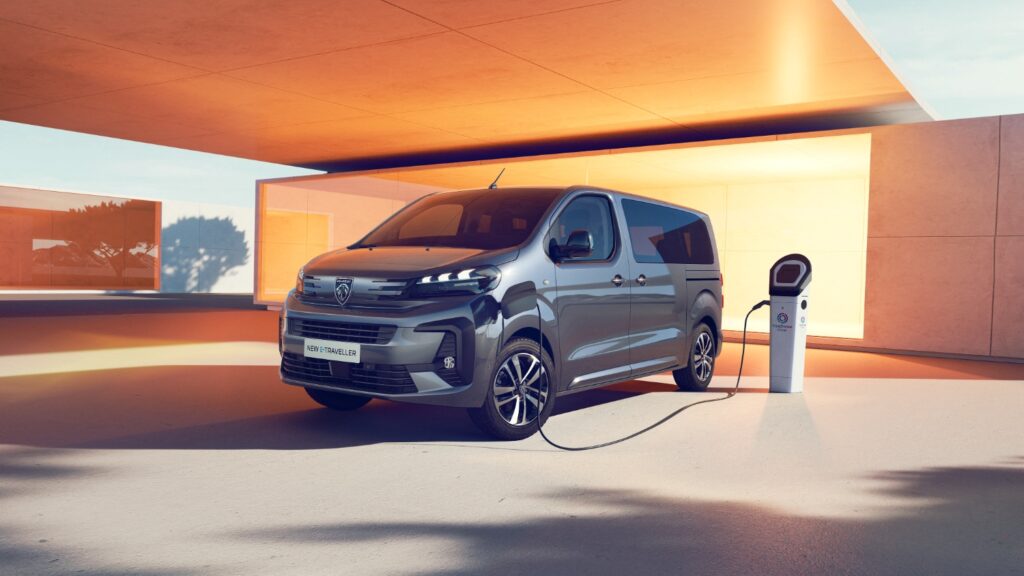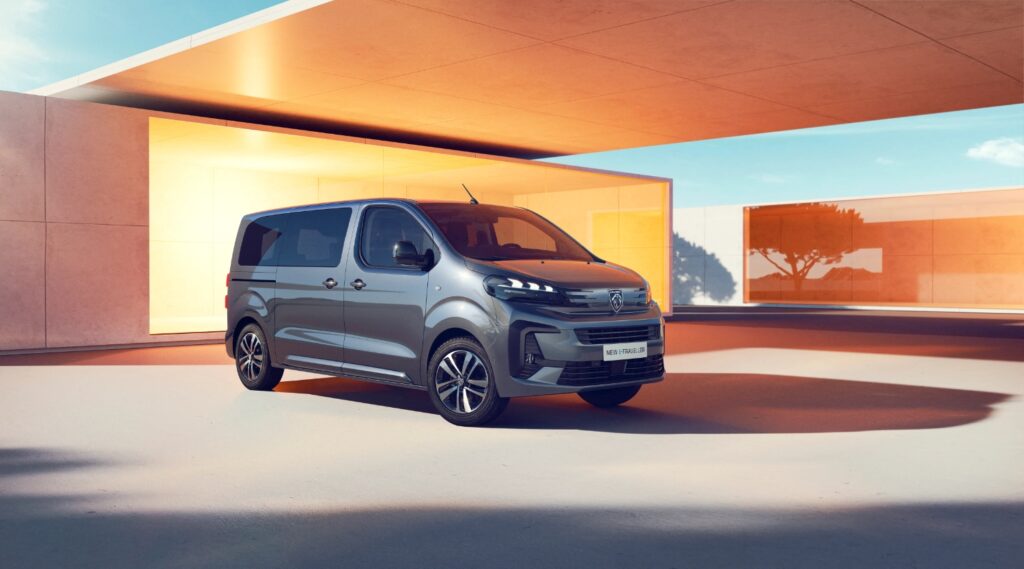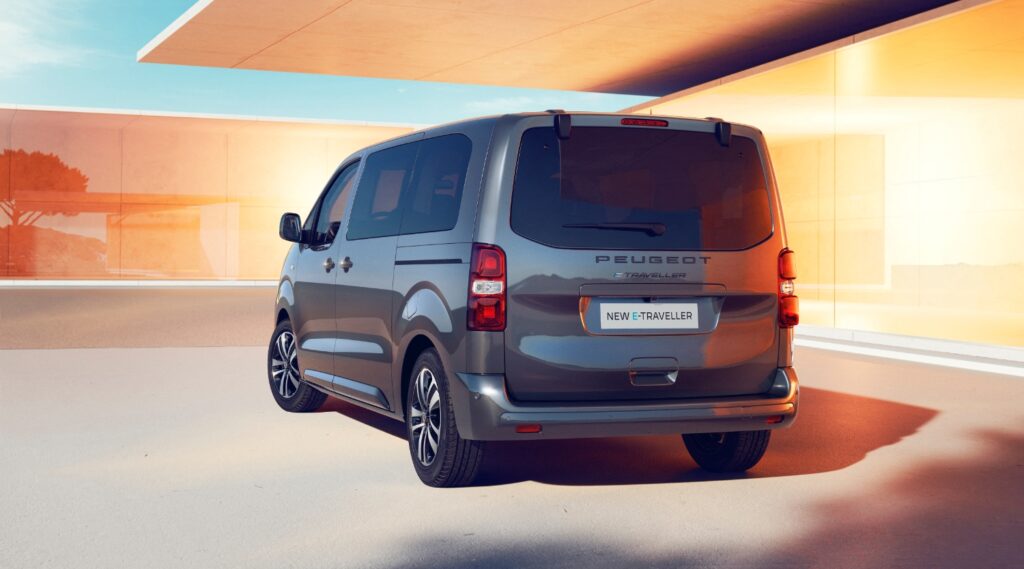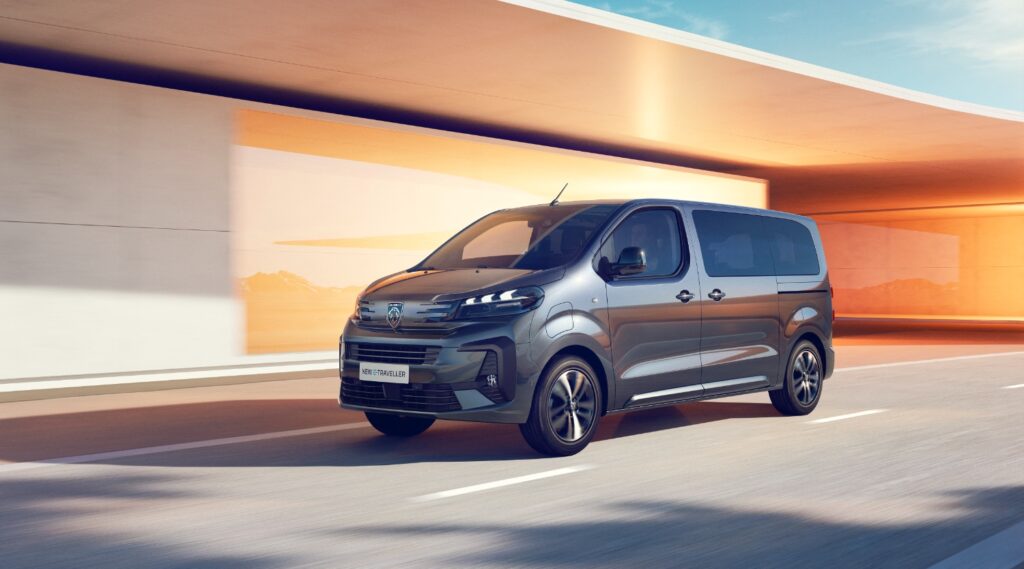The Peugeot has decided to renew the E-Traveller, the electric version of the passenger vehicle with capacity for up to nine people, which will arrive in the national market at the end of the first quarter of 2024, with a renewed image, more technology, and greater autonomy.
In terms of aesthetics, the renewed E-Traveller reveals Peugeot’s effort to equip the model with the new brand image, highlighting a new front grille and the new Peugeot emblem in the center, as well as new full LED headlights, the emblematic luminous signature of three claws, and an optimized bumper in terms of protection and aerodynamics, for greater efficiency.

The biggest news, however, is in the cabin, which receives a visual renewal and an increase in equipment. In this way, the E-Traveller is equipped with a new 100% digital instrument panel of 10” in color, as standard in all new versions, which allows for optimized and customizable visualization of essential information, including navigation system information and information related to energy flow and charging.
Also standard is the 10” central screen that allows control of the infotainment system and connected navigation, which already includes the possibility of connecting to smartphones via Android Auto or Apple CarPlay, and can be controlled through the voice assistant “OK Peugeot”. System updates are done over-the-air.

In addition, the E-Traveller is equipped with a wireless smartphone charger, which is now implanted in the front center console and has two USB-C connections on the instrument panel, two USB-C connections in the second row of seats, and two 12 V connections (in the glove compartment and in the trunk).
In terms of space, depending on the version, the E-Traveller can accommodate up to nine occupants with a trunk capacity of 1,500 liters, or 5 occupants and 3,000 liters, or even offer up to 4,900 liters of cargo volume with 2 or 3 occupants on board.
The renewed E-Traveller will be available in two body lengths: Standard (4.98 m) and Long (5.33 m), with a limited height of 1.90 m, which allows it to enter most parking lots, and is equipped with a new electric powertrain that offers a maximum power of 136 hp and a maximum torque of 260 Nm.

To power the electric motor, batteries with two levels of capacity are available: a 50 kWh battery that offers up to 224 km of autonomy (WLTP combined cycle, in the homologation phase), and a 75 kWh capacity battery that promises autonomy of up to 350 km.
The Peugeot E-Traveller also features a single-phase onboard charger of 7.4 kW and, optionally, a three-phase charger of 11 kW, which allows the renewed model from the French brand to be efficiently charged, regardless of the available infrastructure.
Thus, Peugeot announces that from a public charging point of 100 kW, it is possible to recharge from 5 to 80% of the battery in 38 minutes for the 50 kWh battery, and 45 minutes for the 75 kWh battery.

From an 11 kW wallbox: full charging with the 11 kW onboard charger takes 4 hours and 50 minutes for the 50 kWh battery, 7 hours and 30 minutes for the 75 kWh battery. On the other hand, with a 7.4 kW wallbox: full charging with the 7.4 kW onboard charger takes 6 hours and 43 minutes for the 50 kWh battery, 11 hours and 20 minutes for the 75 kWh battery.
For optimization of autonomy, the new E-Traveller is equipped with a regenerative braking system that can be activated in three levels of regeneration through paddles located behind the steering wheel.







